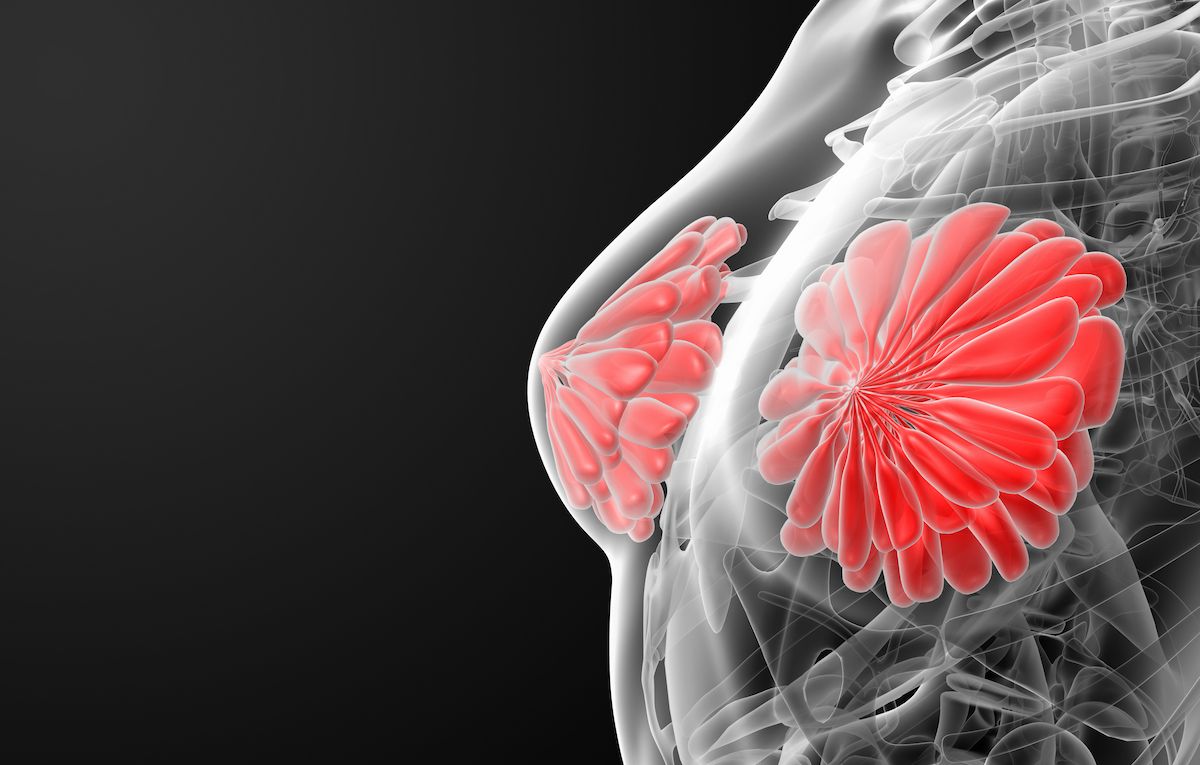NCCN Guidelines Recommend Use of FES PET Imaging in ER+ Breast Cancer
18F-Fluorestradiol is currently the only imaging agent approved by the FDA for assessing estrogen receptor–positive lesion status to better guide treatment decision-making.
18F-Fluorestradiol (18F-FES; Cerianna) PET imaging is now recommended in the National Comprehensive Cancer Network (NCCN) Guidelines for use in determining estrogen receptor (ER) status during staging workup in patients diagnosed with recurrent or metastatic breast cancer, according to a press release from GE HealthCare.1
18F-FES, a radiolabeled form of estradiol, is currently indicated for use in conjunction with PET imaging to identify ER-positive lesions, a strategy that is an adjunct to biopsy in those with recurrent/metastatic breast cancer.

The recommendation follows a publication from the Society of Nuclear Medicine and Molecular Imaging regarding appropriate use criteria (AUC) for ER-targeted PET imaging with 16α-18F-fluoro-17ß Fluoroestradiol.2
18F-FES, a radiolabeled form of estradiol, is currently indicated for use in conjunction with PET imaging to identify ER-positive lesions, a strategy that is an adjunct to biopsy in those with recurrent/metastatic breast cancer. The strategy can potentially offer a comprehensive assessment by detailing a non-invasive, whole-body view of ER-positive lesions, thus offering the opportunity for an informed diagnosis and appropriate treatment plan.
“The latest NCCN Guidelines reflect the impact that the [18F-FES] PET is starting to have in the care of patients with metastatic breast cancer,” David Mankoff, MD, PhD, professor and vice chair of research in radiology at the University of Pennsylvania, said in the press release. “As was the case for fluorodeoxyglucose (FDG) PET, inclusion in the NCCN guidelines will help support access for [18F-FES] PET for patients with [metastatic breast cancer] and provides impetus for the medical community to define the clinical scenarios where [18F-FES] PET will be most helpful.”
18F-FES is known to have a positive safety profile with little in the way of adverse effects (AEs) and serious AEs, according to the AUC. Notably, rare AEs affecting less than 1% of patients include injection site pain and short-term dysgeusia.
The radioactive molecule has a calculated effective dose of 0.022 mSv/MBq, translating to 4.07 mSv for a 185 MBq injected dose; the liver is the highest uptake organ at 0.13 mSv/MBq.
A multidisciplinary group of health care providers and researchers were assembled to form the 18F-FES AUC workgroup, all of whom had notable knowledge in the breast cancer and breast cancer imaging spaces.
The 18F-FES AUS was modeled after the RAND/UCLA Appropriateness Method, in which investigators evaluate several common clinical scenarios in the management of breast cancer, a systemic review, and develop an appropriateness score using a modified Delphi process. Systemic synthesis of available evidence, individual and group ratings, and AUC recommendations based on group ratings and discussions formed the foundation of this process.
Scenarios were grouped into several categories such as diagnosis, initial staging, biopsy, therapy selection, and other clinical scenarios. The scores for each scenario are as follows:
Disease Diagnosis
- Diagnosis of primary breast cancer: rarely appropriate
- Diagnosing malignancy of unknown primary and biopsy is not possible or nondiagnostic: may be appropriate
Initial Staging
- Routine staging of the primary tumor: rarely appropriate
- Routine staging of axillary nodes: rarely appropriate
- Routine staging of extra-axillary nodes and distant metastases: may be appropriate
- Staging invasive lobular carcinoma and low-grade invasive ductal carcinoma: may be appropriate
Biopsy
- Assessing ER status in lieu of biopsy in lesions that could be easily accessed via biopsy: may be appropriate
- Assessing ER status in lesions that are either difficult to biopsy or for which biopsy is nondiagnostic: appropriate
Therapy Selection
- After the progression of metastatic disease and during consideration of second-line endocrine therapy: appropriate
- At the time of initial diagnosis of metastatic breast cancer when considering endocrine therapy: appropriate
- At initial diagnosis of primary breast cancer when considering endocrine therapy: rarely appropriate
- Measuring therapy response: rarely appropriate
- Detecting lesions in those with suspected or known recurrent/metastatic breast cancer: may be appropriate
- Detecting ER status when other imaging tests are equivocal or suspicious: appropriate
“We are delighted to see the inclusion of [18F-FES] PET in the NCCN breast oncology guidelines, for potential use when oncologists are evaluating metastatic breast cancer patients,” Mark Hibberd, MD, PhD, chief medical officer at GE HealthCare’s Pharmaceutical Diagnostics segment, said in the press release. “Detecting [ER-positive] lesions in patients with recurrent or metastatic breast cancer could potentially aid oncologists, surgeons, and clinicians in choosing the most appropriate therapy for patients.”
References
- GE HealthCare announces FES PET imaging recommendation in NCCN Clinical Practice Guidelines in Oncology (NCCN Guidelines®). News release. GE HealthCare. May 24, 2023. Accessed May 25, 2023. https://bit.ly/3MWkFUo
- Ulaner GA, Mankoff DA, Clark AS, et al. Appropriate Use Criteria for Estrogen Receptor-Targeted PET Imaging with 16α18F-Fluoro-17β-Fluoroestradiol. National Comprehensive Cancer Network. Accessed May 25, 2023. https://bit.ly/3MCCJla
Newsletter
Stay up to date on recent advances in the multidisciplinary approach to cancer.